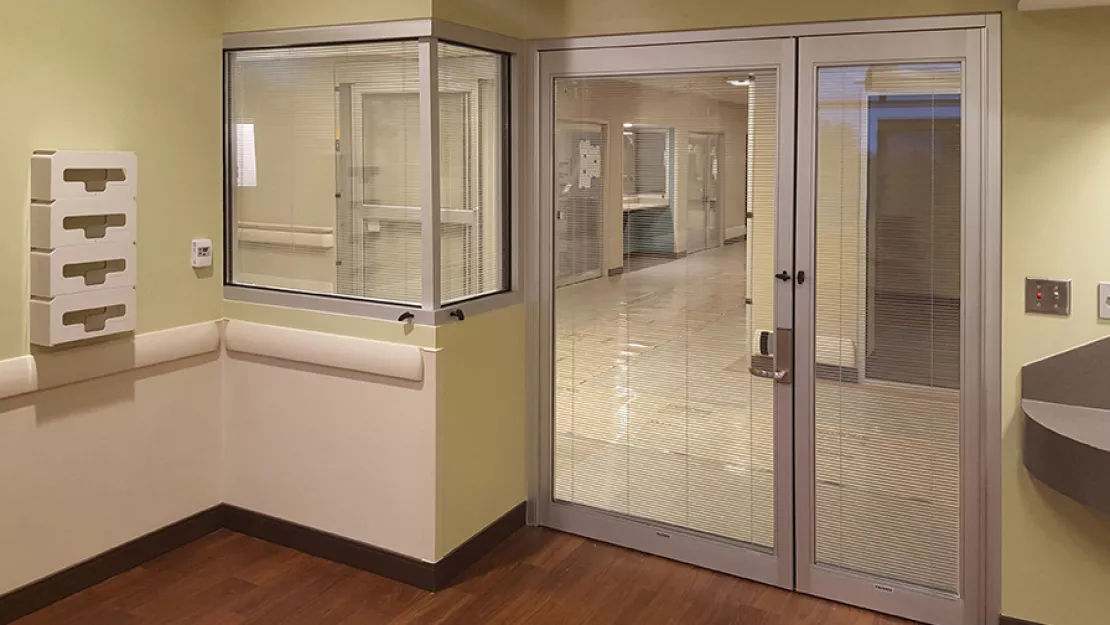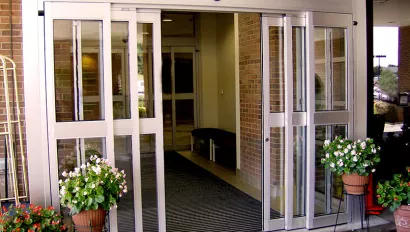Do you need “leakage-rated” or “isolation-rated” doors?
This is one of the most common misunderstandings we see here at STANLEY Access Technologies, when it comes to ICU doors. That’s according to Larry Hamaker, one of STANLEY’s senior specification writers. He’s seeing a lot of ICU doors specified as smoke & draft rated doors intended for use on isolation rooms. And if we didn’t catch them during submittals, you’d have a problem when it came time to pressurize those rooms.
So, when & where should you use these two specialized types of ICU doors? To get to the bottom of this, let’s look at HOW these different door types are tested. And learn a bit more about something called an “artificial bottom seal.”
Leakage-rated doors (AKA smoke and draft rated doors)
“Leakage-rated” means a door is tested per UL 1784, meeting the performance requirements of NFPA 105. This door type is also known as a smoke and draft rated door.
Smoke and draft rated ICU doors have two main benefits for you and your clients:
- Hospital staff can protect their patients in the ICU room until fire and smoke is contained. So they can avoid (or delay) transporting critical patients connected to medical equipment when there’s a fire.
- You have more flexibility for designing ICU areas where certain patient-to-nurse ratios could be an issue with a fire marshal.
What is NFPA 105?
It’s the standard used to determine the performance for the installation of smoke door assemblies. These doors are tested to meet air leakage requirements. The air leakage test, UL 1784, was developed for areas in healthcare facilities where smoke infiltration is a concern. You’ll find many of STANLEY’s ICU doors have the option to add positive latching and smoke and draft seals to meet UL 1784.
Here’s what surprises most architects:
UL 1784 does NOT test the air leakage at the bottom of your doors. That’s right. You’re allowed to use an artificial bottom seal to allow testing of the rest of the door for leakage of air and smoke. We’ll come back to that artificial seal in a moment. Why does UL allow sealing up the bottom of your door? It’s because, in an actual fire event, smoke rises. And this artificial seal allows focused testing of the doors seals at the head and jamb conditions.
What’s an “artificial bottom seal” and why is it important?
UL 1784 allows the bottom six inches of a door to be sealed with tape, or other means, to provide an artificial bottom seal (“ABS”). As we already discussed, this allows a better test of the edge seal leakage above the floor level. You’ll also see UL 1784 listings now specify whether an ABS was used in the test on the lower six inches of your door to close it off. (STANLEY requested they add this distinction to their listings for clarity.)
Isolation-Rated Doors
An isolation room needs to pressurize on its own with the door closed. And, as we know, trackless ICU doors have a 3/4” gap at the bottom, which can make it difficult to maintain the right pressure. “Isolation rated” means a door is tested to ensure it meets positive and negative pressure requirements.
Doors used in isolation rooms need to demonstrate they’ll work in the real world. So, you can’t have the ABS applied when you’re testing for isolation or pressurized service. The bottom sweeps need to do all the work to help you keep the pressure. So, again, to be effective as an isolation door, it should not be tested with an ABS.
What type of bottom sweeps are used? Typically, for an isolation rated ICU door, STANLEY provides brush-type sweeps on you sliding panels (SX). If it’s a swing-only panel (SO), then a rubber sweep can be used.
As you can see, if you specify a smoke and draft rated ICU door for your isolation room, you could run into an issue. We don’t want that any more than you do. Hopefully, this article has helped you see the differences between these two door types. Making it easier for you to determine the right door to spec on your next big job.




